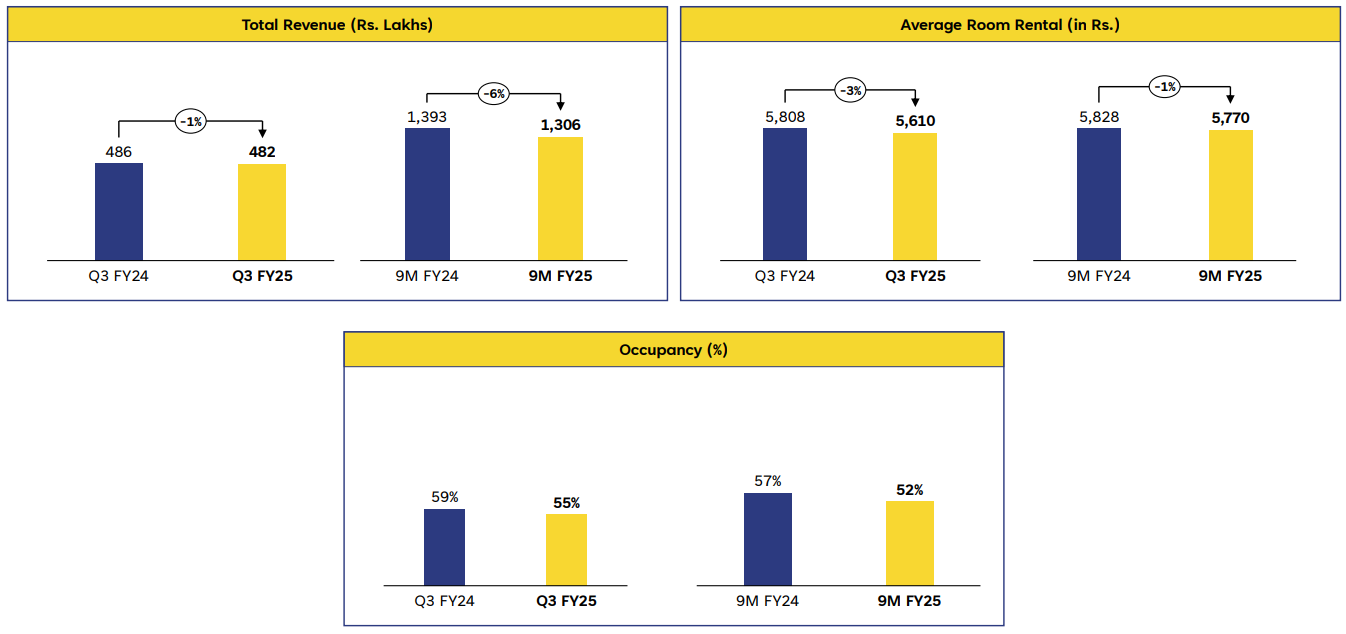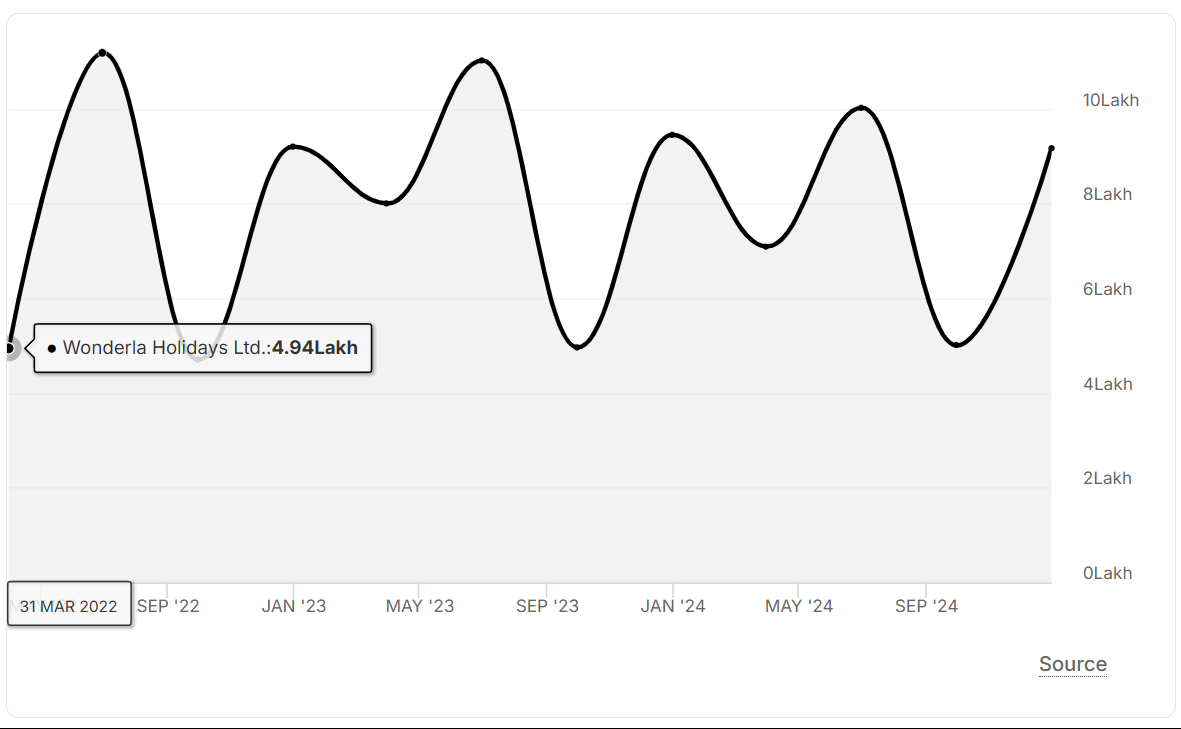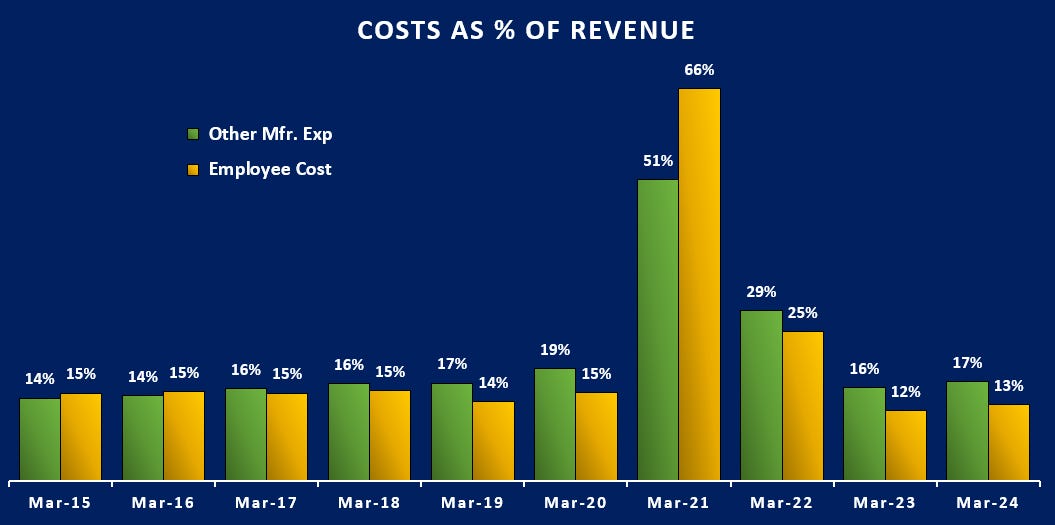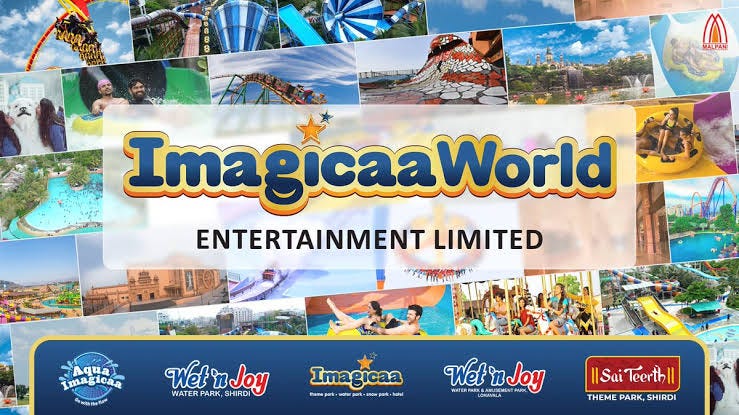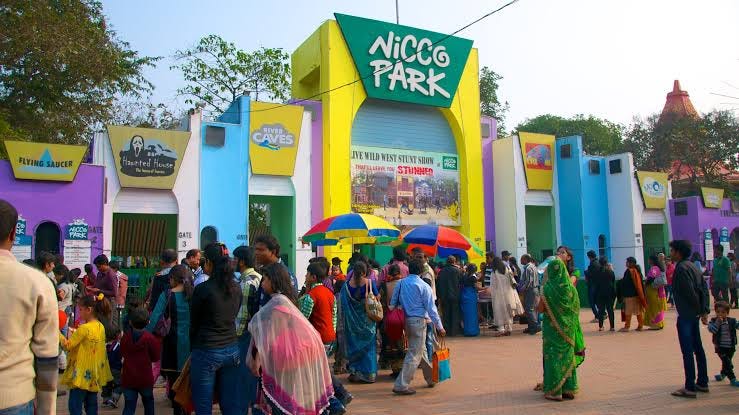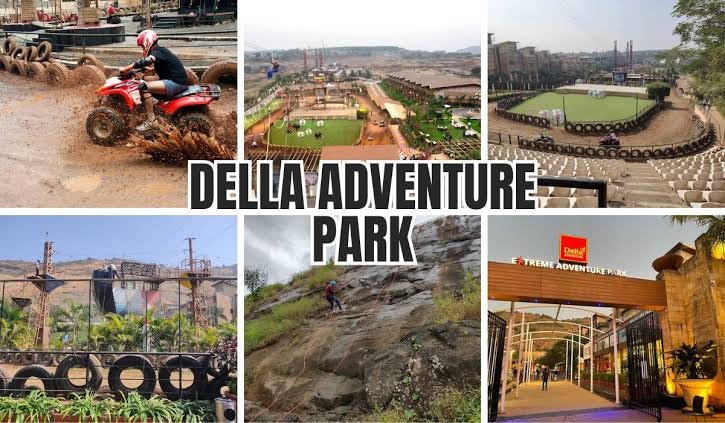1. Company Charts
*Comparison charts are Indexed*
Wonderla Holidays Ltd Performance (1yr- down 34%)
Wonderla Holidays Ltd vs. NSE Nifty
Wonderla Holidays Ltd vs. NSE Smallcap
About the Company
This image above is for NOSTALGIA PURPOSE
Wonderla Holidays Limited is one of India’s leading amusement park operators. Founded in 2002 and headquartered in Bengaluru, the company operates large theme parks in Kochi, Bengaluru, Hyderabad, and a newly launched one in Bhubaneswar. These parks feature a wide range of land and water rides catering to families and thrill-seekers alike.
▪ One of the Most visited parks in India: Wonderla parks have been visited by over 43 million* visitors since 2000, making us the most visited amusement park in India
▪ Two decades of experience (since launch of first park) in running parks in 4 different cities: Kochi, Bengaluru, Hyderabad and Bhubaneshwar
Company Journey
New Portfolio Addition
Region-wise Financials:
Bengaluru Park – Q3 & 9M FY25 Metrics
Kochi Park – Q3 & 9M FY25 Metrics
Hyderabad Park – Q3 & 9M FY25 Metrics
Wonderla Resort, Bengaluru – Q3 & 9M FY25 Metrics
Other Key Metrics:
Quarterly Footfalls (Lakh)
Average Ticket Price - Entertainment Parks (Rs)
Management Overview
KMP's Remuneration
If you like the hard work we put in, you can invest in us:
For our Non-Indian audience: You can donate to us through PayPal. Click here.
For our Indian audience, UPI QRs are given below:
5. Revenue Breakdown:
6. Company’s Financial Analysis:
SALES:
Sales have grown at a CAGR of ~11% in the past 10 years. March 2021 Performance drop was due to Covid-19.
GROSS PROFIT:
Gross Profit has increased at a CAGR of ~11% for the past 10 years. March 2021 Performance drop was due to Covid-19.
EBITDA:
EBITDA has increased at a CAGR of ~12% for the past 10 years. March 2021 Performance drop was due to Covid-19. The Margin dropped due to a super increase in Employee Cost (% of Revenue) and Other Mfr. Expenses (% of Revenue).
Net Profit Margin %
Net profits have continuously increased at a CAGR of ~198% for the past 10 years. March 2021 Performance drop was due to Covid-19.
BALANCE SHEET:
Common-Size Balance Sheet:
Cashflow Statement:
Cash Conversion Cycle:
The payable days are extraordinarily high as the Trade Payables include: Total outstanding dues of micro enterprises and small enterprises who barely have any bargaining power, giving the company liquidity freedom, and basically they are doing business on the creditor’s money, which is exceptional for any business.
7. KEY RATIOS:
8. Shareholding Pattern:
9. SWOT ANALYSIS:
Growth Drivers:
Management Guidance:
Competiors in the Market
Wonderla Holidays Limited, a leading amusement park operator in India, faces competition from several other players in the amusement and leisure industry. Key competitors include:
1. Imagicaa World Entertainment Ltd
Operates the Imagicaa theme park near Mumbai.
Offers a wide range of rides and themed entertainment.
Targets a premium audience with large-scale attractions.
2. Nicco Parks & Resorts Ltd
Based in Kolkata and operates amusement parks in eastern India.
Offers water rides, thrill rides, and educational attractions.
Focuses on affordable entertainment for families.
3. Delta Corp Ltd
Primarily a gaming and casino company, but also involved in hospitality and leisure.
Indirect competitor in the broader out-of-home entertainment space.
4. Della Adventure Park
Located in Lonavala, Maharashtra.
Known for over 50 adventure activities including bungee jumping, dirt biking, etc.
Targets adventure seekers and corporate outings.
Industry Overview
The leisure and hospitality industry encompasses businesses that provide recreation, entertainment, lodging, and food services to consumers. It's a broad sector driven by discretionary income, tourism, lifestyle trends, and seasonal demand.
1. Key Segments
This industry covers a wide range of services focused on entertainment, relaxation, travel, and dining:
Amusement Parks & Attractions: Businesses like Wonderla or Imagica offering rides, shows, and themed experiences.
Hotels & Resorts: Accommodation providers ranging from 5-star resorts to budget chains like OYO or Treebo.
Food & Beverage (F&B): Restaurants, cafes, QSRs (quick service restaurants) like McDonald’s, Domino’s, etc.
Travel & Tourism Services: Agencies and aggregators like MakeMyTrip or Thomas Cook that plan trips and experiences.
Gaming & Casinos: In India, online gaming is growing fast (Dream11, RummyCircle), while casinos are mostly limited to Goa and Sikkim.
Events & Recreation: Music festivals, sports events, and cultural fairs, often tied with tourism.
2. Market Size & Growth
India’s leisure and hospitality market is massive and growing. In 2023, it was over $150 billion, and it is projected to cross $250 billion by 2030, with a CAGR (growth rate) of about 7–8%.
This growth is powered by increased domestic tourism, the rise of digital platforms, and a growing middle class.
Globally, it contributes significantly to the $4.5 trillion travel and tourism market, making it a vital economic sector.
3. Key Growth Drivers
Rising Disposable Incomes: More people in India are earning and spending on non-essential experiences like travel, food, and entertainment.
Domestic Tourism Boom: Post-pandemic, Indians are exploring more within the country, which benefits hotels, parks, and travel services.
Youth & Experience Economy: Millennials and Gen Z prefer spending on experiences (like a trip or music concert) over material goods.
Government Support: Schemes like Dekho Apna Desh, Swadesh Darshan, improved railway stations, airports, and highways are boosting tourism.
Online Booking & Digital Payments: Apps like Zomato, OYO, and Cleartrip have made leisure spending easier and more accessible.
4. Key Trends
Experiential Tourism: Travel and leisure that offer unique experiences like desert safaris, wine trails, or heritage walks.
Sustainable Tourism: Eco-lodges, plastic-free hotels, and carbon-neutral travel are becoming popular.
Budget Travel Boom: Growth in affordable accommodation (hostels, budget hotels), especially among students and solo travelers.
Integrated Properties: Resorts and parks together (e.g., Wonderla with its in-park resort), providing a full-day or multi-day experience.
Technology Adoption: Hotels and travel firms are using AI, automation, and contactless services for smoother guest experiences.
5. Challenges
Seasonal Demand: Many leisure businesses (like amusement parks) earn most of their revenue in peak seasons (vacations, festivals).
High Capital Requirements: Building a theme park or luxury resort involves massive upfront investments.
Regulatory Hurdles: Getting permissions (especially for land, environment, and licenses) can be lengthy and complex.
Skilled Staff Shortage: Service quality matters a lot in this industry, but retaining skilled hospitality workers is tough.
External Shocks: Tourism is sensitive to events like COVID-19, economic recessions, or geopolitical tensions.
















